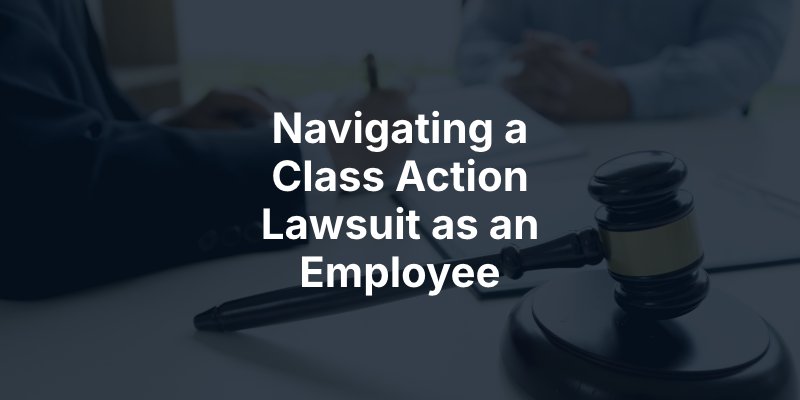A class action lawsuit is a legal proceeding where one or more individuals, known as lead plaintiffs, represent a larger group of people who have experienced similar harm or violations.
In employment, this often involves multiple employees alleging the same misconduct by an employer, such as unpaid overtime or discriminatory practices.

Common Grounds for Employment Class Actions
Employees may consider a class action lawsuit when they share common grievances, including:
- Wage and Hour Violations: Failure to pay minimum wage, provide mandated meal and rest break, or overtime pay violations in Orange County
- Misclassification: Incorrectly labeling employees as independent contractors to avoid providing benefits.
- Discrimination: Systemic bias based on race, gender, age, or other protected characteristics.
- Retaliation: Punitive actions against employees for reporting violations or participating in investigations.
- Unsafe Working Conditions: Neglecting to maintain a safe and healthy work environment.
The Class Action Lawsuit Process
Initial Investigation
An employment attorney reviews the facts, gathers evidence, and determines whether widespread violations exist that justify a class action.
Filing the Complaint
The attorney files a complaint in court on behalf of the lead plaintiff and others similarly affected.
Class Certification
The court must certify the case as a class action. The plaintiffs must prove:
- Numerosity: A sufficient number of individuals affected, making individual lawsuits impractical.
- Commonality: Shared legal or factual claims among class members.
- Typicality: The lead plaintiff’s claims are representative of the class.
- Adequacy: The lead plaintiff can adequately protect the interests of the class.
Discovery Phase
Both sides exchange evidence, conduct depositions, and build their cases. Discovery often involves reviewing pay records, company policies, and employee testimony.
Settlement Negotiations or Trial
Many class actions settle before trial. If settlement talks fail, the case proceeds to trial, where a judge or jury determines liability and damages.
Distribution of Damages
If successful, damages are divided among class members, often after court approval. The lead plaintiff may receive an additional incentive award for their role in the case.
Potential Outcomes of Class Action Lawsuits
Successful employment class action lawsuits can result in:
- Monetary Compensation: Back pay, unpaid wages, and damages for affected employees.
- Policy Changes: Mandated revisions to company practices and policies.
- Injunctive Relief: Court orders requiring the employer to cease unlawful practices.
Pros and Cons of Employment Class Action Lawsuits
Pros
- Strength in Numbers: More pressure is put on the employer, increasing the chances of success.
- Efficiency: Saves time and resources compared to many individual cases.
- Access to Justice: Class actions make it possible for employees with smaller claims to pursue them when they might not be practical individually.
- Potential for Larger Settlements: Employers may agree to significant settlements to avoid the risks of class-wide liability.
Cons
- Longer Process: Class actions take time due to certification requirements and complex procedures.
- Smaller Individual Payouts: Awards are divided among all class members, often reducing each person’s share.
- Less Individual Control: Lead plaintiffs and attorneys make key decisions; individual members have limited input.
- Risk of Certification Denial: If the court denies certification, employees may have to file individual lawsuits.
Steps to Take If You Suspect a Violation
- Document Everything: Keep detailed records of hours worked, communications, and any incidents.
- Consult an Employment Attorney: Seek legal advice to assess the validity of your claims and explore options.
- File a Complaint: Report violations to relevant agencies, such as the U.S. Department of Labor, California Labor Commissioner, or the California Civil Rights Department.
- Consider Forming a Class Action: If others are affected, a class action may be the most effective route. An attorney can guide you through each step of the process.
